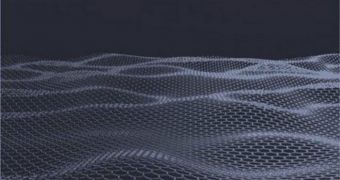Since it was first discovered, less than six years ago, graphene has become one of the most heavily-researched materials in the world. Now, experts at the Cambridge University will conduct a study that will prepare the stage for a €1 billion research into the amazing compound.
Scientists have a lot of reasons to be fascinated by this material. Graphene is an atom-thick carbon compound, featuring a hexagonal, honeycomb-like structure and only two dimensions.
It is more resistant than any other material in the world, and it features some interesting properties when it comes to conducting electricity. The number of applications in which it could be used is literally increasing with each study experts conduct.
The European Union might invest up to €1 billion in such research, but authorities first need to figure out whether the investment is worth the potential return. This is why they commissioned the Cambridge team to conduct the new study.
“Graphene, a truly European technology, initiated in the UK, is at the crossroad between fundamental research and applications,” explains Cambridge from the Department of Engineering professor Dr. Andrea Ferrari, the leader of the technology roadmap for the consortium.
“Exploiting the full potential of graphene will have huge impacts on society at large,” he goes on to say. Graphene was first obtained from graphite at the University of Manchester, in 2005. Its founders were awarded the 2010 Nobel Prize in Physics for their findings.
“We are thrilled that the EU Commission shares our view and believes in our focused and open approach to moving forward, at a time when the international community, from United States to Korea, is moving significant resources to strengthen their know-how and facilitate the roadmap to applications,” Ferrari goes on to say.
Graphene could be used primarily to create new electronics, such as liquid crystal displays, organic light-emitting diodes, touch-screens, flexible electronic devices. It could also underlie new developments in the fields of spintronics, quantum information processing and communications.
The material can also be used to create carbon nanotubes. They can be produced when sheets of graphene are rolled and sealed at the point of contact. Single-walled carbon nanotubes (SWCNT) are in fact rolled up graphene.
Undoubtedly, materials and technologies based on this advanced material will experience a boom in coming years, especially considering that new methods of producing it in bulk are currently being developed.
The European Union obviously plans to preserve its lead position in this area of research, as evidenced by the huge monetary commitment it made.

 14 DAY TRIAL //
14 DAY TRIAL //